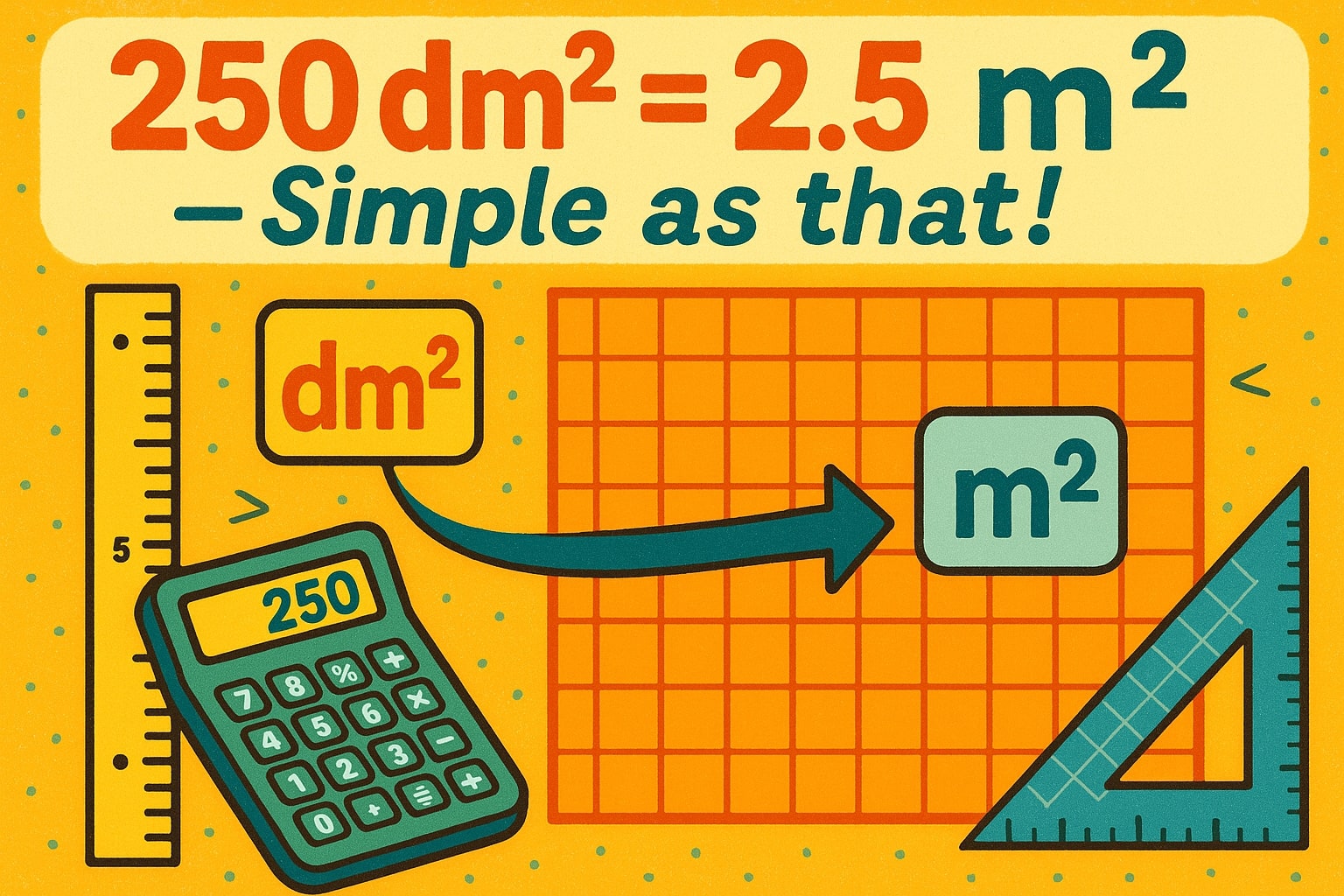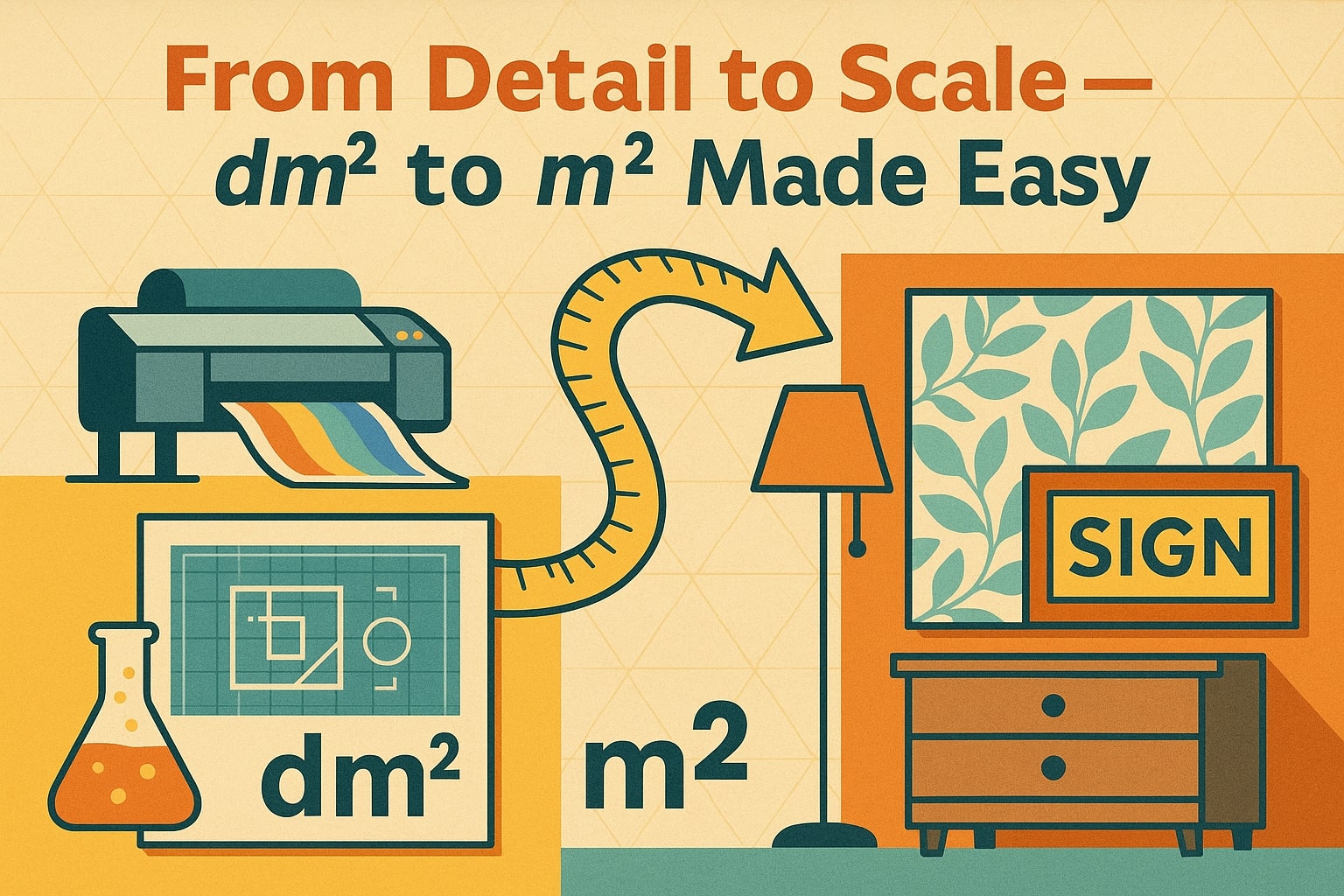square decimeter to square meter – How to convert dm² to m²
Square decimeters (dm²) and square meters (m²) are both metric units used to measure area — but they operate at different scales. Square decimeters are ideal for mid-sized surfaces like paper layouts, small display panels, or packaging specs. When projects get bigger, though — into flooring, signage, construction, or architectural work — the switch to square meters makes things cleaner and easier to manage.
Because both units come from the metric system, converting between them is simple.

How the units relate
The prefix “deci” means one-tenth. So:
1 decimeter = 0.1 meter
To convert area, you square both sides:
1 square decimeter = 0.1 × 0.1 = 0.01 square meters
Formula:
square meter = square decimeter × 0.01
Or flip it:
1 m² = 100 dm²
Example: converting dm² to m²
Suppose you’re working on a print layout that covers 250 dm². To convert that into square meters:
square meter = 250 × 0.01 = 2.5
So, 250 dm² equals 2.5 m² — a size that might match a medium-sized poster or banner.
Need a fast result? Use our Area Converter, or explore more measurement tools in our Conversion tools collection.
Did you know?
-
A standard A1 poster is about 59.4 dm², or 0.594 m², making dm² a convenient unit for the print industry.
-
Floor plans for bathrooms or storage closets are sometimes measured in dm² during early design phases before switching to m².
-
In European packaging, product labels often list surface area in dm² — especially for wraps, cartons, or sheet-based materials.
-
Solar panel specs often mention both m² and dm², depending on whether they're listing per-panel or per-module coverage.
-
DM² is also used in scientific fields like thermodynamics and fluid dynamics when measuring small surface exposures or surface tension tests.
From layout planning to large-scale surface measurement
Square decimeters give designers, printers, and engineers a flexible unit — small enough to be detailed, but not as tiny as square centimeters. They're perfect when you're working with pieces that don’t quite justify square meters but need more structure than cm² allows.
When the design is finalized or scaled up — for example, being applied across multiple signs, tiles, or panels — switching to square meters makes costing, sourcing, and layout planning much easier.
This conversion often happens in:
-
Printing and signmaking, where layout files are built in dm² and material orders are made in m²
-
Interior design, where product packaging, wallpaper rolls, or decals are labeled in dm²
-
Academic and lab reports, where exposed surface areas are tracked in dm², then converted for analysis or simulation at the square meter level

From small-scale to standard format
To convert square decimeters to square meters:
square meter = square decimeter × 0.01
This conversion helps shift between detailed designs and real-world applications — from visual layouts to physical production. Whether you're scaling a print job or calculating floor coverage, this is the metric-friendly way to bridge the gap.
Need help converting other area units? Try the Area Converter or explore more useful tools in our Conversion tools section.

